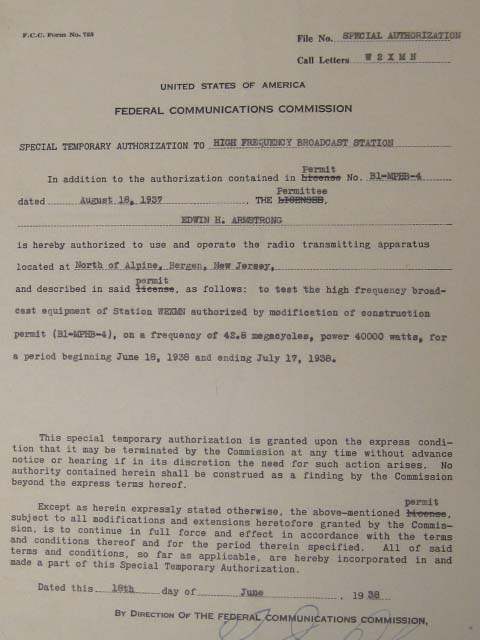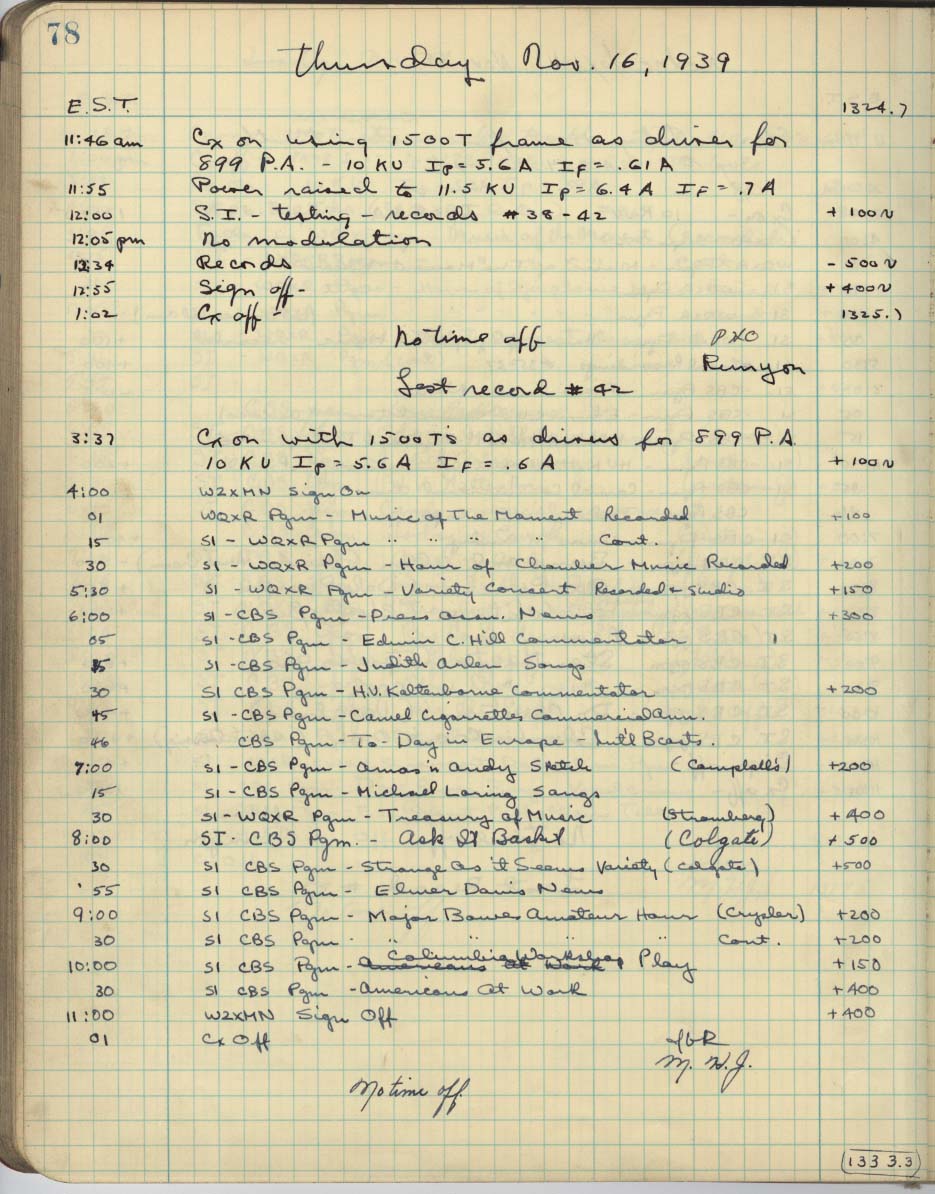 |
As a result of some queries I received with regard to the last post, I decided station W2XMN warrants additional details (photographs and documents).
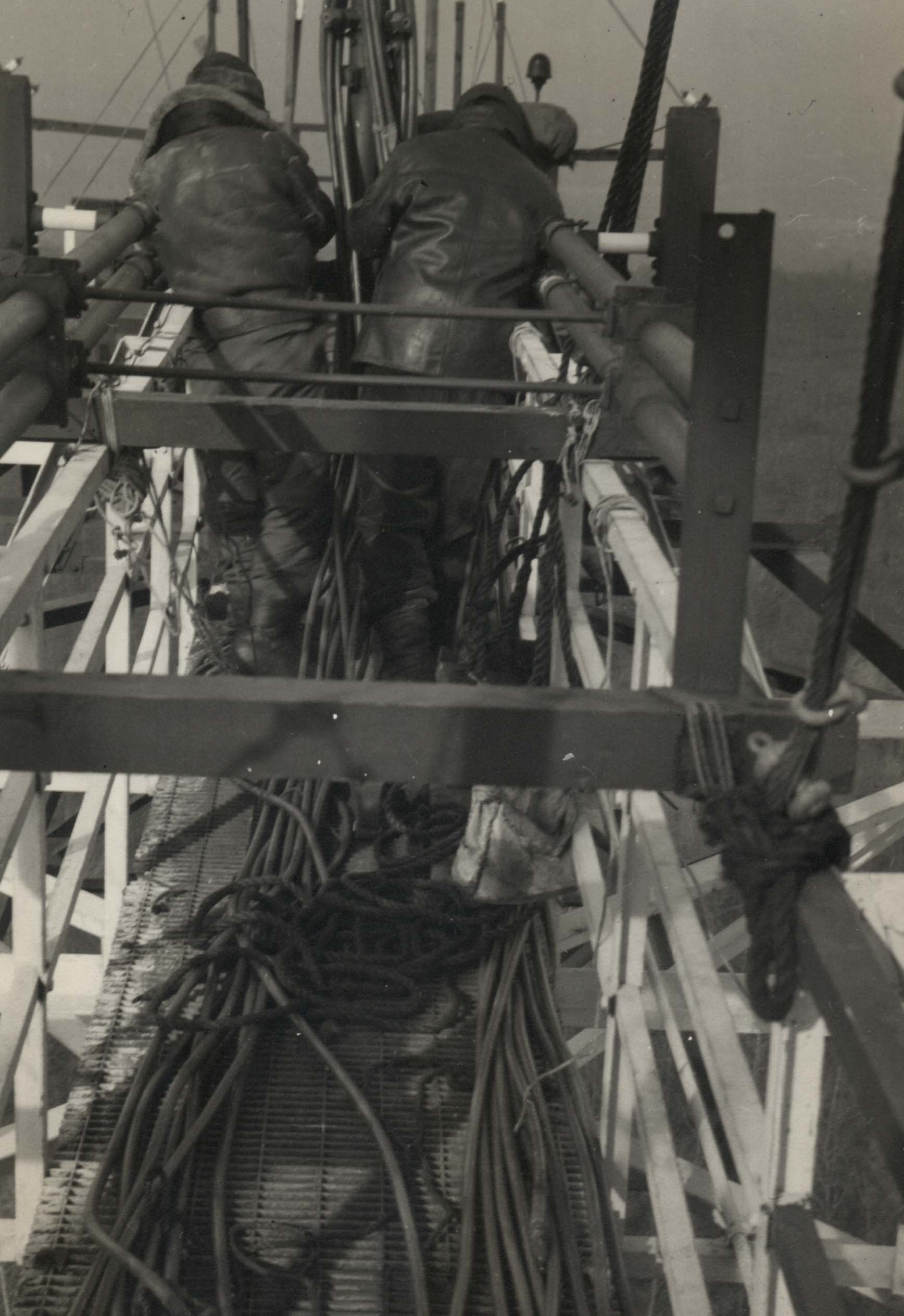 |
First, Armstrong choose Alpine as the site for his station because of the importance of height as it directly relates to the surrounding landscape, so the chosen site was 500 feet above the Hudson River, facilitating ultra frequency transmissions.
 |
The structure of the antenna of the Alpine station can be seen in many photographs here. Armstrong delineates the details of his tower as follows:
"The height of the tower above grade is 400 feet. The length of the three cross arms is 150 feet and their vertical separation slightly over 80 feet. The radiating members of the antenna consist of a series of seven pairs of crossed rods about 11 feet long which are mounted on a boom supported between the tips of the two upper arms. These crossed rods or ‘turnstiles’ are separated slightly less than half a wave length and are fed by a series of transmission lines which wind around the supporting member. The whole antenna is fed by an open-wire transmission line of about 500 ohms impedance which runs vertically through the center of the tower and horizontally over the transmitter building for a total distance of about 700 feet. The efficiency of transmission appears to be in the order of 90 per cent." 1
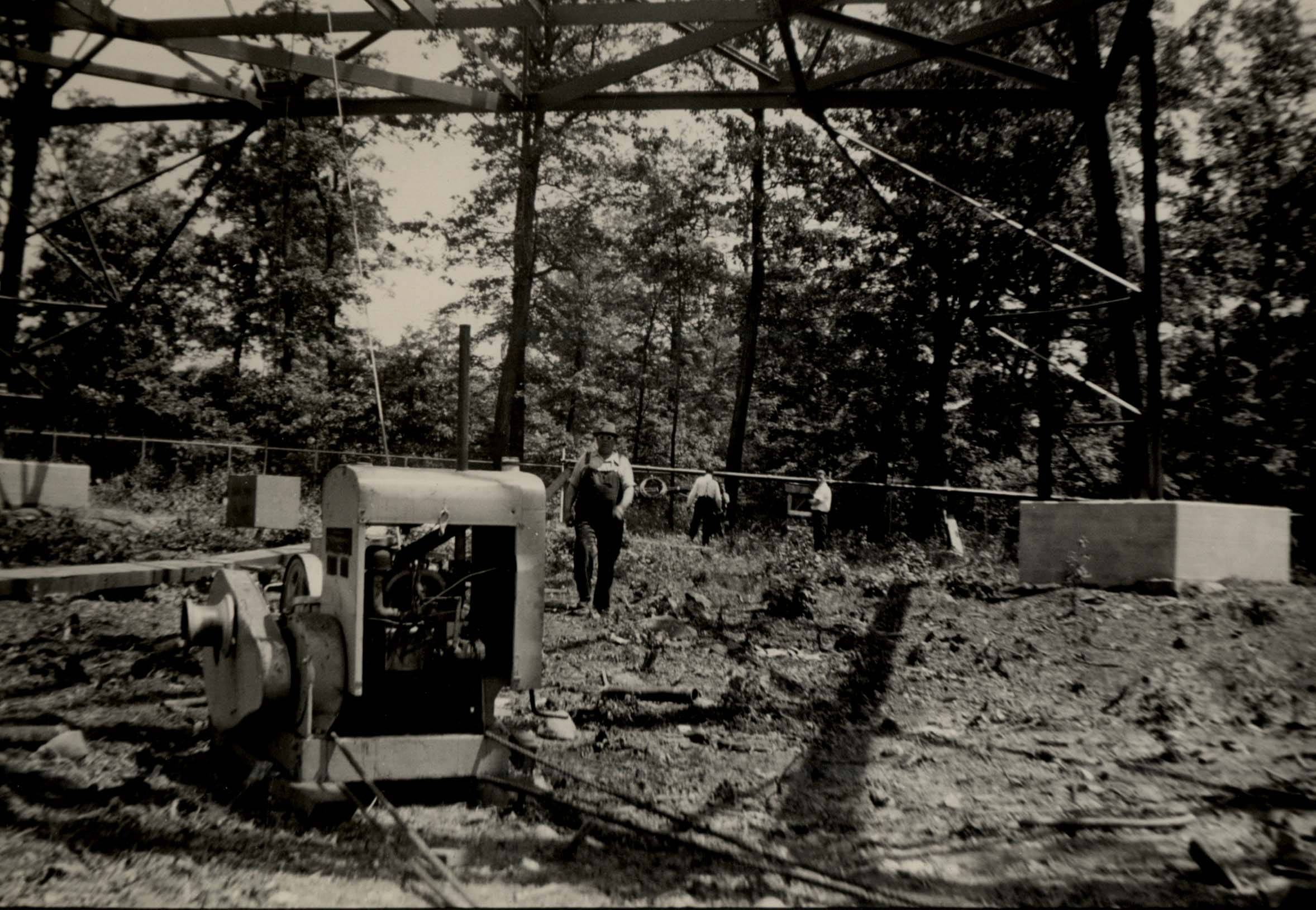 |
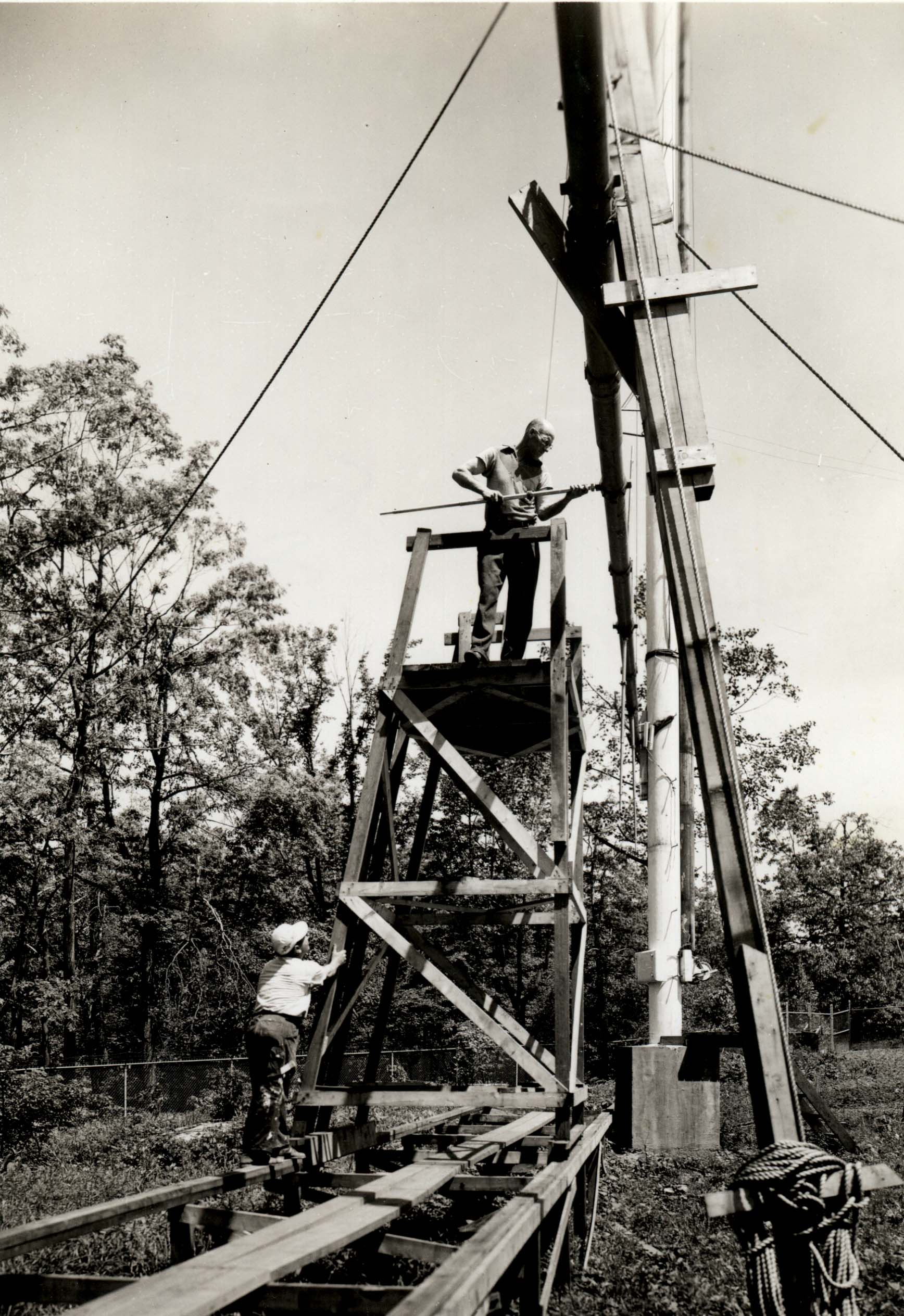 |
 |
Following the W2AG’ s many demonstrations by W2AG (Yonkers, New York) to members of the broadcasting industry, the Yankee Network decided to construct a station at Mt. Asnebumskit, Paxton, and Station WDRC (Hartford, Connecticut) management followed with the construction of a station on Meriden Mountain located in Meriden, Connecticut. General Electric was intrigued with Frequency modulation broadcasting and, along with Zenith, began to build FM equipment. Eventually General Electric would build it’s own FM station.
 |
 |
 |
Immediately following, many more stations were constructed and applications for experimental licenses were flowing into the Federal Communications Commission (FCC). On December 19, 1939, the FCC finally decided to look into the commercial broadcasting possibilities of FM. The Commission held hearings and as a result released the following advantages of FM:
"1) lack of static; 2) FM operates on low power and gives greater service area than an AM station with similar power; 3) FM stations do not interfere with each other (an FM receiver will accept only the strongest signal when the ratio of the desired to undesired strength is about 2 to 1, whereas in the case of AM, the ratio must at least 20 to 1 for good broadcast service); and 4) FM has definite advantages (technically, economically, quality of service) in operating low power services such as forestry, police, aircraft, etc." 2
On January 1, 1941 the FCC approved commercial FM broadcasting. When the United States entered World War II permits for FM broadcasting would come to a halt. The next battle became postwar frequency allocations.
|
|
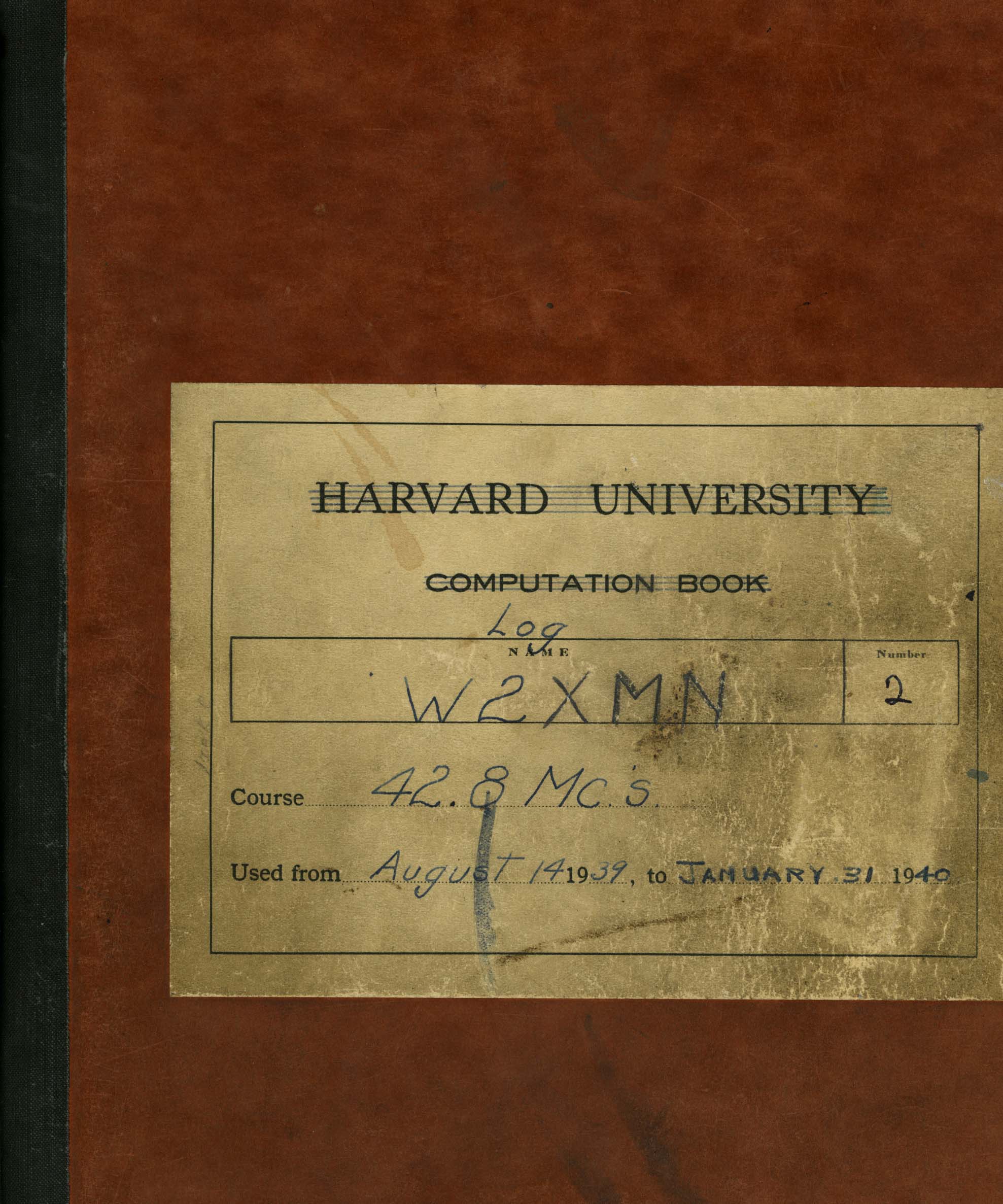 |
|
|
|
|
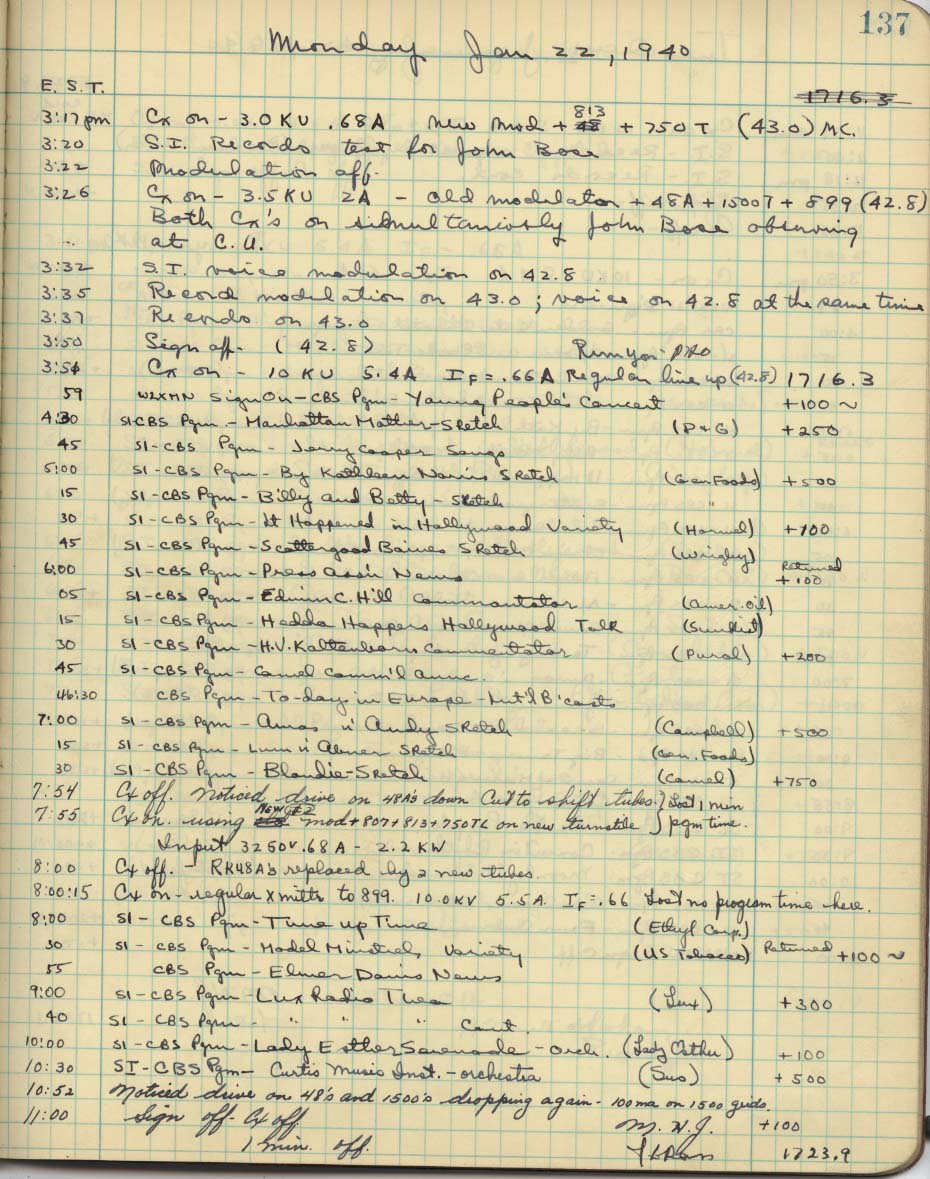 |
All of the photographs, documents and logbooks you see here are available within the Edwin H. Armstrong Papers.
1. Armstrong, Edwin H. "Evolution of Frequency Modulation," Electrical Engineering, 1940 December, pp. 490.
2. Erikson, Don V., Armstrong’s Fight for FM Broadcasting: One Man vs. Big Business and Bureaucracy, The University of Alabama Press (University, Alabama), 1973, pp. 69.
